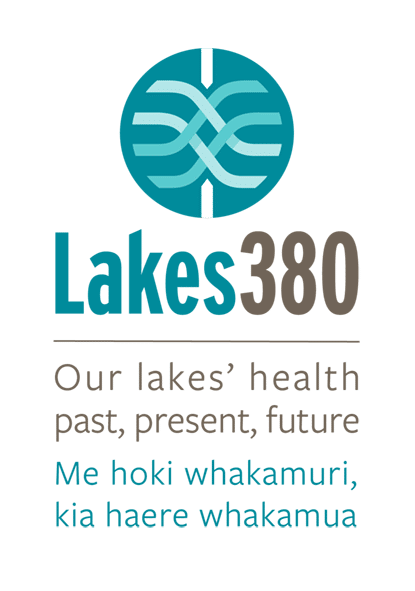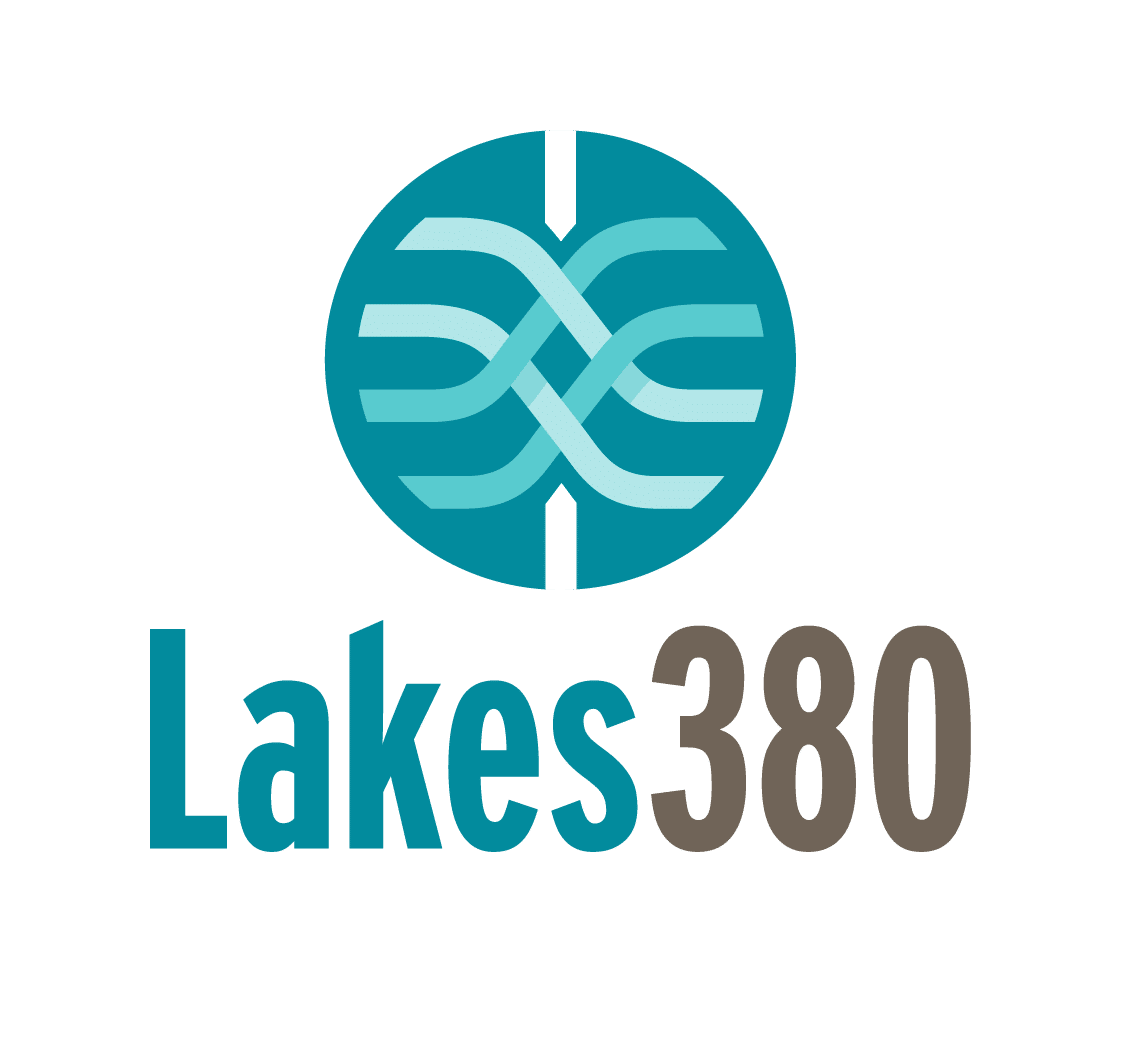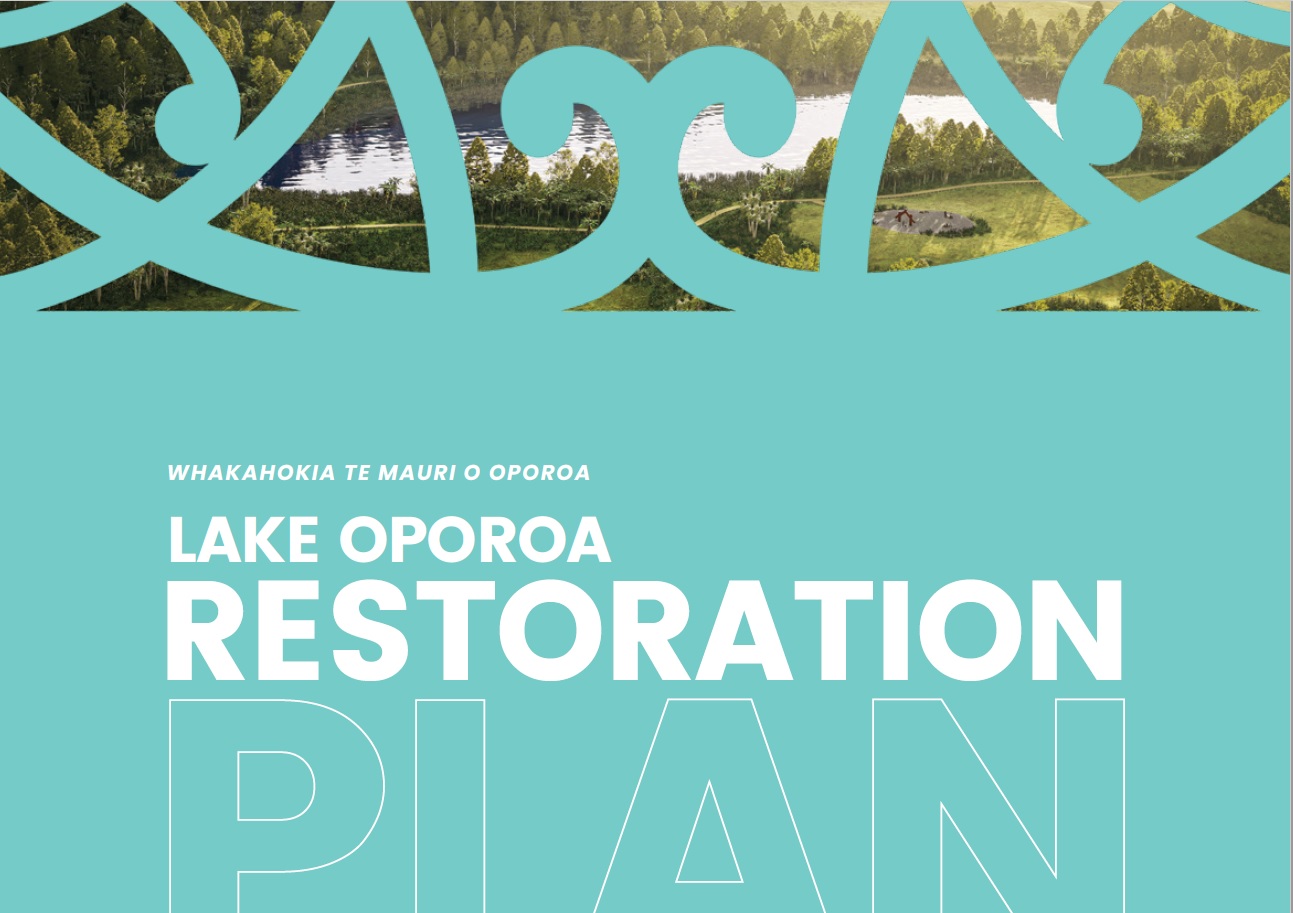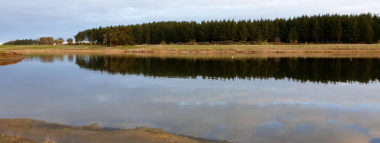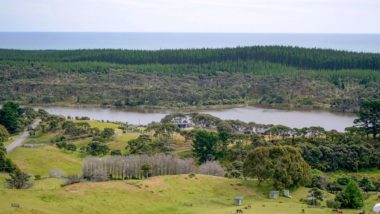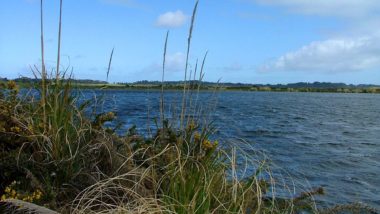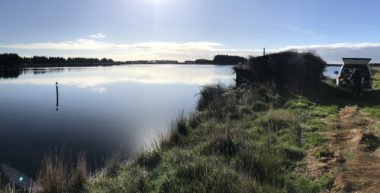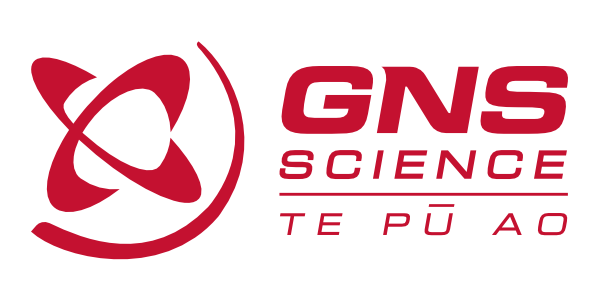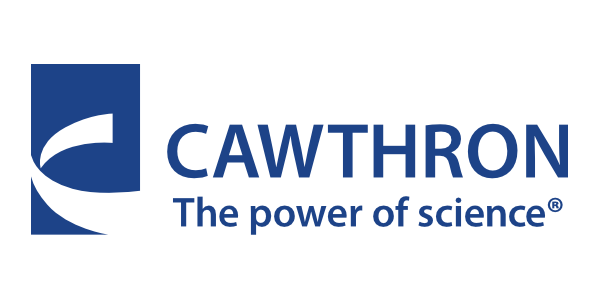Laura Kelly, Scientist, Cawthron Institute
Following some work helping process samples from previous field campaigns in Canterbury I was very excited to be joining my first Lakes 380 field sampling trip in the Waikato Region. It promised to be a busy week, with the last-minute additions of some lakes meaning three lake days were planned for the whole week! We almost achieved this goal, with 14 lakes sampled, 56 cores collected (plus some demo cores for outreach activities) and screeds of water quality data and samples.
After travelling in from Nelson and Wellington our field crews unpacked and set up the field gear at our base in Hamilton East. It was all hands to the pumps to inflate Kea and Kihitara and load them onto the GNS ute and trailer, so we were ready for an early start for day one of sampling on Monday. We were joined on the trip by David Schmale from Virginia Tech in the USA, who was using drones to collect surface water samples from the lakes. David captured some incredible images of the lakes we sampled and the teams in action throughout the trip.
Monday morning saw us leaving bright and early for the short drive northwest of Hamilton to begin our sampling campaign on three peat lakes surrounded by rolling hills of farmland. The weather was a bit overcast and drizzly with light winds that increased throughout the day, making us glad we had brought Kōtare along to save some of the paddling! With a background in wadeable rivers, lake sampling was new to me, but Susie quickly showed me the ropes on Lake Kaituna (Lake B), our first lake of the trip and all the sample labelling we did before the trip started to make lots more sense! A short drive over the main road led to our second lake for the day, Lake Kainui (Lake D). Lake Kainui had a boat ramp, so we were able to launch Kōtare to collect the water quality samples (and tow the coring crew in Kea out to the depocentre). This was a relief as the wind started picking up and drizzle turned to showers of rain while we were sampling. Our last lake for the day was Lake Areare under moody skies (Photo 1). This time I joined the coring team on Kea and learned the process of preparing the corer and coring. The paddle back was a fair distance into the wind, but we made good time and loaded all the equipment back up for the drive back to base.
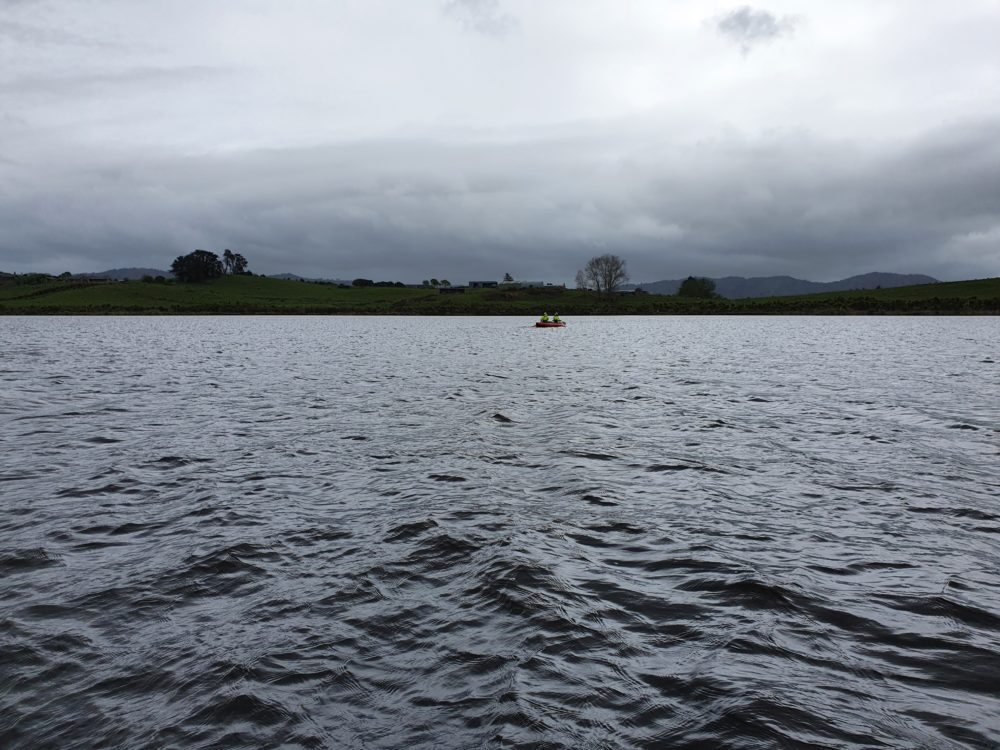
Photo 1: Kihitara heading back to shore under moody skies at Lake Areare
Day two saw the weather bring heavy rain to the Waikato. Undeterred, we all donned our wet weather gear and set out for Huntly and our three lakes: Hakanoa, Waahi and Okowhao. With the weather so wet, David couldn’t launch the drones, so we had an extra two pairs of hands helping to process samples and handing tools on the coring boat making the process faster.
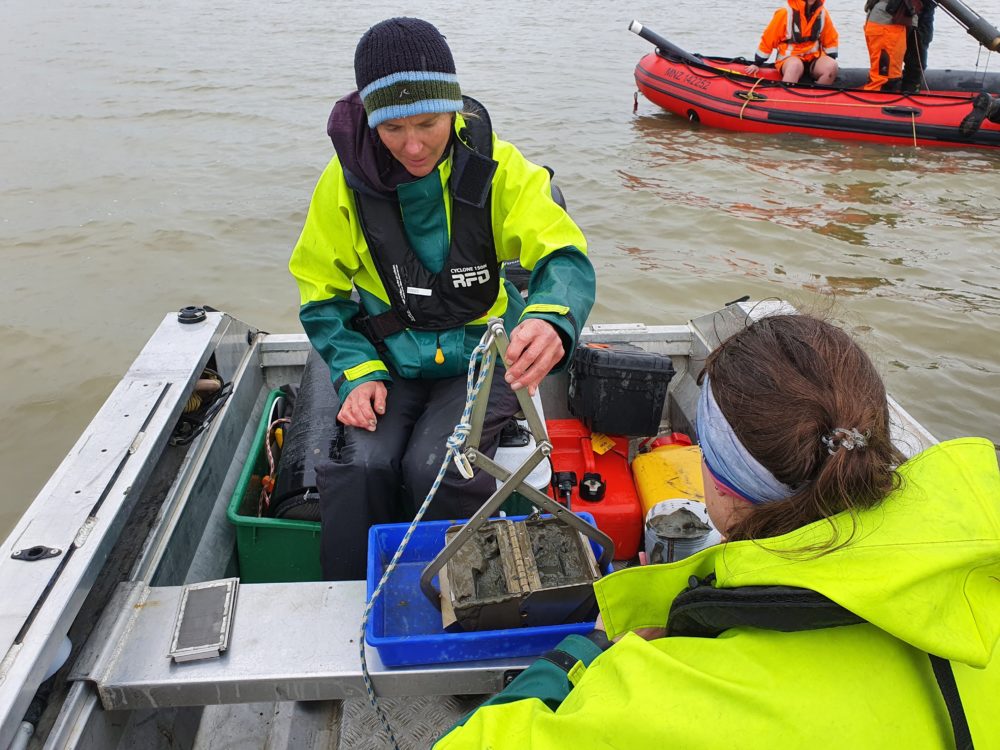
Photo 2: Susie and Katie processing a ponar sample at Lake Waahi in full wet weather gear to keep the rain off
Lake Okowhao proved to have some of the hardest access of the lakes on this trip, so we decided to only launch Kea and work with both the water quality team and coring team in a crew of five, while I set up a sample filtering station on-shore (photo 3). Launching Kea was a challenge involving manoeuvring over two fences, through a bog and then some raupo at the lake edge. A few shrieks and lots of laughter were hallmarks of misplaced steps in the bog and raupo resulting in a few wet gumboots at the end of the day! The clouds finally lifted while we were sampling and David launched his drone to get some arial footage of the team on the lake. With no wind, he captured spectacular wave patterns from Kea moving as the corer was being driven into the lake sediment (see photo 4)!

Photo 3: The ute tailgate made for a great sample filtering station by the shores of Lake Okowhao
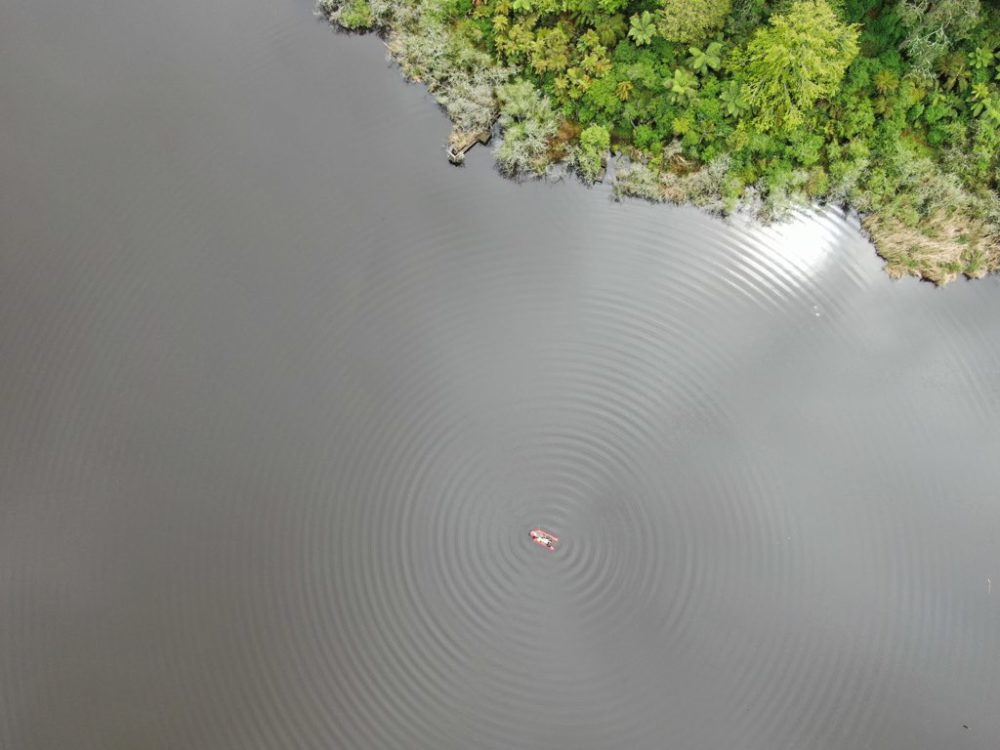
Photo 4: Amazing wave patterns formed by the rocking of Kea as the corer drives the core into the lake sediment at Lake Okowhao (photo by David Schmale from Schmale Labs)
Day three saw us sample the largest lake of the trip, Lake Waikare, along with Lakes Whangape and Rotongaro. We had a beautiful calm morning to sample Lake Waikare (photo 5). The lake water was very green-brown at this lake, which has a history of algal blooms especially in the summer months. Up next was Lake Whangape, another large, shallow lake a short drive from Lake Waikare. The wind picked up by the time we arrived at the lake and we were thankful for the motor on Kōtare as it was too windy to attempt paddling on such a large lake. Launching was a challenge as the lake was very shallow along the margin at the access point. This led to some wet gumboots (and discussions about the merits of boot driers) as we navigated an empty Kōtare into water deep enough to start the motor. Our third lake was Lake Rotongaro a slightly smaller lake, which was accessed through a farm track and past fields of cows, maize, and a litter of piglets.

Photo 5: A beautifully calm day greeted us for the morning at Lake Waikare
Our fourth day had us leaving base by 7 am to drive to the furthest lakes on the first week of the campaign – a 2.5-hour drive from base through some incredible landscapes. This was my first trip to this part of the country, and I looked on with interest as we drove south-west of Hamilton toward Taharoa. After a long drive through winding country roads and 7 km of farm trail we finally got our first view of Lake Harihari and the team couldn’t resist stopping and all getting some photos. The view from above the lake was magical with the Tasman Sea in the background and Lake Harihari nestled in the foothills of mixed forest and farmland (photo 6). With the wind picking up and rain setting in the team launched Kihitara and Kea and got sampling underway. There were some cold hands cleaning the gear and we were all relieved to get back in the utes and turn up the heaters for the drive to Lake Taharoa. The high iron content led to a thick orange-brown layer of oxidised iron at the top of the cores at Taharoa. By the time we finished sampling it was after 3 pm and with the weather still very cold, windy, and wet we decided to call it a day and drive the 2.5-hours back to base.
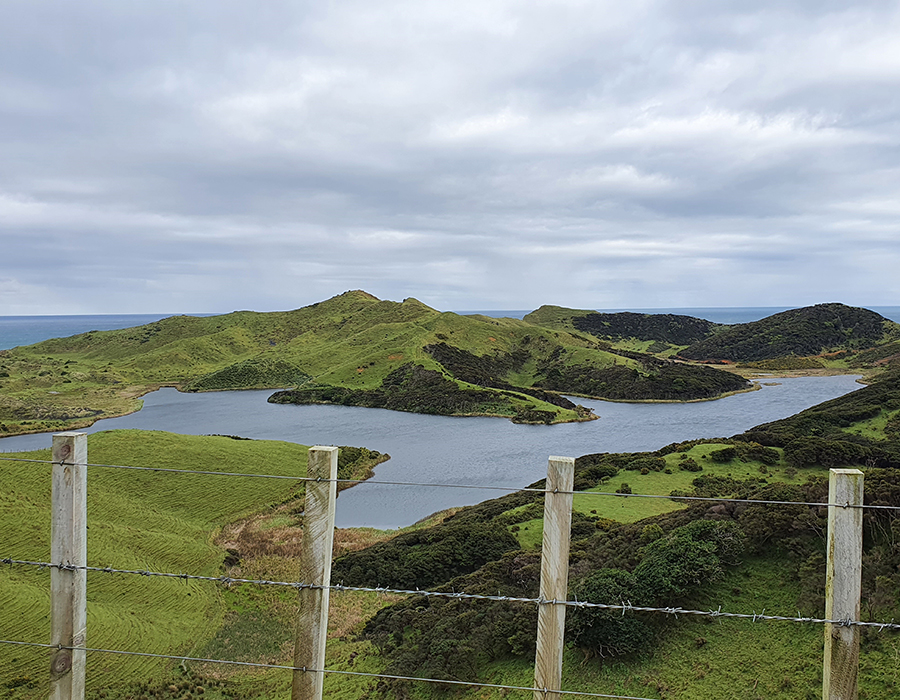
Photo 6: After a long drive, the view of Lake Harihari was magical, nestled in the hills in front of the Tasman Sea
Our last sampling day, Friday, dawned sunny and calm. We sampled three small lakes a short drive south of Hamilton: North Serpentine Lake, Lake Rotomanuka and Lake Mangakaware. Access to North Serpentine Lake required a bit of manpower to transport Kea over a fence and through scrubby bankside vegetation with deep mud underfoot. It was beautiful out on the lake, which was 4 metres deep and had some of the best visual clarity of all the lakes for the week (photo 7). Lakes Rotomanuka and Mangakaware had much easier access and we sampled in record time, having all three lakes sampled and back at base by 3.30 pm!
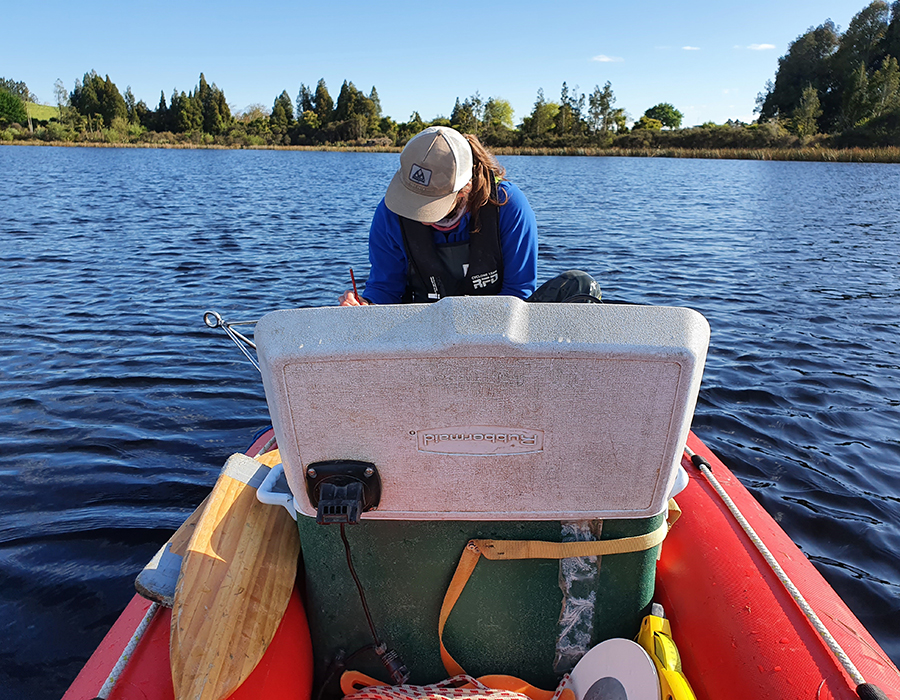
Photo 7: Katie filling in the field form while sampling from Kihitara on North Serpentine Lake on the sunniest day of the week
Saturday morning was time for core cutting to a great soundtrack (courtesy of Andrew), before splitting the demo cores ready for an outreach day on Monday. Splitting the cores is always rewarding as you get to see some of the history of the lakes revealed in front of you in the layers of sediment and tephra.
I had such a great time, and we had a very successful week, which is a testament to the great planning by Susie, Marcus and many others behind the scenes at Cawthron, GNS and other organisations. We had an amazing field team and I feel so privileged to have had the opportunity to get out and do science in such great places, with a wonderful crew of people: Susie, Marcus, Andrew, Riki, Katie, Henry, David and Celeste.
